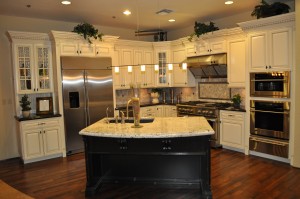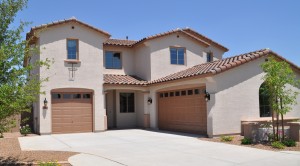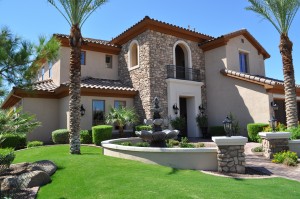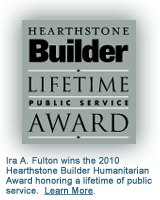 The countertops in your home may be constructed of glazed ceramic tile, plastic laminate, granite stone slab, quartz stone slab, cultured marble or Corian. They are designed to provide years of use. Countertops are one of those items that after you have moved in, the care of your countertops is your responsibility. In order to properly maintain your countertops, we’d like to share some helpful information.
The countertops in your home may be constructed of glazed ceramic tile, plastic laminate, granite stone slab, quartz stone slab, cultured marble or Corian. They are designed to provide years of use. Countertops are one of those items that after you have moved in, the care of your countertops is your responsibility. In order to properly maintain your countertops, we’d like to share some helpful information.
This post is a little longer than most, but it is designed to cover a variety of countertops so that you can scroll down and read the information that pertains to the countertop(s) in your home.
Basic tips and advice:
- Do not cut or chop with sharp objects or kitchen utensils. Always use a cutting board to protect your countertops when you prepare food. While minor scratches that result from cutting food may not be noticeable at first, in time they will dull and mar the luster of the finish. This can happen to even the hardest ceramic tile.
- Wipe up spills immediately. Some liquids, particularly hot ones, can cause almost imperceptible stains on ceramic tile grout and Formica or laminate countertops. In time, the stains can accumulate and become unsightly.
- Be careful to avoid dropping pots and pans and other kitchen items on your countertops. This can break or chip the counter’s surface.
- Protect the finished surface from hot items with a heat protector pad. Remember, they are heat retardant, not heat resistant.
- Countertops can be damaged by sitting on them. Excessive weight can cause warping, drawer malfunction or may cause the top to pull away from the wall.
Ceramic Tile
Glazed ceramic tile is known for its durability and the variety of colors and designs. Ceramic tiles are purchased in Dye lots that have the same texture and color. Because an exact replacement match of ceramic tile can be impossible, we urge you to take special care to avoid breaking or damaging the ceramic tile. Save any unused tile that you may have for future repairs.
Ceramic tile is brittle and can be broken by a sharp blow from a heavy object. The best way to avoid broken tiles is to use a cutting board and other protection for your ceramic tiles when you are at work in your kitchen. Wipe spills away promptly to avoid staining the grout. Warm soapy water, a detergent or a commercial tile cleaner can be used to keep your tile bright and shiny.
Grout Sealing: Water can penetrate grout seams and joints, and will damage materials adjacent to and underneath the tile. This occurs when excessive amounts of water are used during floor washing, or in the bathroom from splashes and spills from the showers, tubs, and sinks. The grout and tile installer will apply a silicone based grout sealer before close of escrow to reduce staining, mildew, and water penetration. Because the grout between the tiles is porous, you may want to consider sealing the grout once a year or so. This will prevent stubborn stains from penetrating the grout and becoming unsightly. Routine scrubbing of the grout with warm soapy water will keep it clean and fresh. Cleaners that are to strong can stain the grout. See manufacturer recommendations for sealing products. Sealers and cleaners can be found at your local hardware store and should be used following manufacturers guidelines.
The seams, joints, and sealers are not waterproof, and require proper maintenance to prevent water seepage and damage of materials adjacent to and underneath the tile. Inspect these areas frequently and apply a silicone caulk to the joint as needed.
Note: Fulton Homes cannot ensure that ceramic tile repairs requiring new material will match the color of the existing tile material or colored grouting. Color variations are normal.
Cultured Marble and Granitex
Cultured marble/Granitex is a modern product, which adds style to your bathrooms. The manufacturers have instituted as many procedures as practical to insure a consistent product. Listed below are several characteristics that are beyond the manufacturers control.
Hairline Scratches: Whether inward or outward, they are considered normal, and customer maintenance is recommended to buff these scratches out as necessary.
Irregular Granite or Color: For each square foot of marble an exact percentage of pigment is added. Although they may be disbursed in a wide range of graining, this effect gives each product a character of its own. The manufacturer cannot control the results of either color or graining.
Gel Coat: Gel coat, the outermost skin is prone to varying degrees of inconsistencies:
- Orange peel effect, caused by temperature of drying.
- Ripple effect caused by shrinkage.
- Stress marks, which are also cause by shrinkage.
- Dimples, caused by impurities in the chemicals or catalyst.
Thermal Shock: Rapid changes of temperature from 5 ° F to 70° F may cause cracking. Keeping marble at room temperature (65° F to 80° F) and controlling water heater temperature to approximately 120° F can control this effect.
Yellowing: The yellowing of cultured marble/granite is an inherent property of the product. As part of the normal aging process, cultured marble/granitex will yellow. There are some determining factors that do affect this process. The thinner materials, such as shower panels, are more susceptible to discolor @ an accelerated rate. Cultured marble/granitex installed in a secondary bath, which tends to be darker than the main bath, tends to discolor at an accelerated rate. Naturally bright-light baths tend to decelerate the process. **Stationary objects (IE: ceramic tooth brush holders, planters, tissue paper holders, towels) must be moved periodically to eliminate yellowing from underneath the object.
Proper maintenance of cultured marble is similar to the maintenance needs of fine wood. Remove spills immediately to avoid stains. The lacquer contained in most hair sprays can damage the surface coating of cultured marble tops. Do not use abrasive cleansers on your cultured marble countertops or marble bath panels. Most food and drinks are acidic and can etch the finish on the marble. Do not place any items, which may scratch the surface directly onto the countertop.
Routine care of cultured marble countertops requires warm water and a soft cloth or sponge. If the surface of your cultured marble countertops becomes dull, you might consider having the marble polished by a professional who specializes in marble polishing.
Add caulk as necessary from shrinkage or settling. Use latex caulking were cultured marble/Granitex meets the walls, and silicone caulking where culture marble/Granitex meets culture marble/Granitex (joints).
Apply polishing products as directed by the manufacturer of the product to prevent hard water build-up, reduce scratching and to maintain luster. It allows quick and complete water run off. See manufacturer recommendations for recommended polishing products.
Avoid gritty abrasive cleaners (any dry powder cleaners), bleaches or acetone based nail polish. Use only mild liquid cleaners.
Hand wipe or buff any scratches incurred during normal use with similar paste wax using a feathering method.
Items NOT to be used or placed on marble:
- Razor blades to remove any foreign material.
- Cigarettes placed on any edge or surface.
- Any acetone based cleaners or other acetone based liquids.
- Old style Polaroid negatives, including curing lotion.
Corian Solid Surfaces
Corian® was created for a lifetime of easy care. Just follow the simple guidelines listed here to keep your Corian® surfaces looking as fresh as the day they were installed. Your care and maintenance kit will provide you with the tips and tools to help you enjoy your new Corian® top for years to come. To download a PDF version of Corian® Care and Maintenance tips go on-line to www.corian.com
Routine Care
Typically, three types of countertop finishes that are used: matte/satin, semi-gloss and high-gloss. Most countertops are finished with a matte/satin finish. All sinks have a matte finish. However, routine cleaning may raise the gloss level of the countertop over time. Soapy water, ammonia-based cleaners (Not window cleaners) or commercially available solid surface cleaners will remove most dirt and residue from all types of finishes. See manufacturer recommendations for recommended cleaning products.
Stubborn residue will require a little stronger cleaner. Follow the product recommendations to properly clean your countertop and sinks.
With over 100 colors and varying hues, some colors may appear to require more frequent cleaning to maintain their beauty. Darker colors tend to show fine scratches more easily and will require more attention than lighter colors. Over time through care and use your countertop will acquire a patina, changing the appearance of the finish. You may restore the look of the original finish by following the refurbishing guidelines per the manufacturer recommendations.
Cleaning All Finishes
- Most dirt & residue: Use soapy water or ammonia based cleaner (not window cleaners), rinse and wipe dry.
- Preventing hard water marks: Wipe countertop dry after spills or cleaning.
- Removing hard water marks: Use an over-the-counter cleaner formulated for hard water marks that is recommended by the manufacturer.
- Difficult residue: Spray residue with Deep Cleaner recommended by the manufacturer. Follow instructions on cleaner bottle. If residue persists, repeat process. If residue still persists, follow directions for removing scratches.
- Disinfecting: Occasionally, wipe surface with diluted household bleach (1 part water/1 part bleach). Rinse top thoroughly with water and wipe dry.
Sinks & Lavatories
- Cleaning: Follow procedures above and see manufacturer recommendations for recommended sink cleaning products.
- Disinfecting: Occasionally fill sink 1/4 full with diluted household bleach (1 part water/1 part bleach). Let stand for 15 minutes, and then wash sides and bottom as solution drains. Rinse sinks with water.
CAUTION
- DO NOT get bleach solution in eyes or on bare skin. Always follow the manufacturer’s safety precautions.
- Over-the-counter cleaners recommended by the manufacturer may be used for routine cleaning in place of soap and water.
- To enhance the gloss level on semi-gloss and high-gloss finishes, use a countertop polish. See manufacturer recommendations for recommended countertop polishing products.
Preventing Heat Damage
Corian® is an excellent material for heat resistance. As with all countertop materials, it is important to minimize direct heat exposure to protect your surface and investment. Always use heat trivets or hot pads when placing hot objects on any surface. Allow cookware to cool before placing them into a Corian® sink.
Preventing Other Damage
In most cases Corian® can be repaired if accidentally damaged. However, be sure to follow the guidelines here to prevent any permanent damage to Corian®.
- Avoid exposing Corian® to strong chemicals, such as paint removers, oven cleaners, etc. If contact occurs, quickly flush the surface with water.
- Do not cut directly on Corian® countertops.
- Boiling water alone will not damage your Corian® sink, however it’s a good practice to run your faucet while pouring boiling water into your sink.
Removing Minor Cuts and Scratches
Because the solid beauty of Corian® goes all the way through, Corian® surfaces are completely renewable. You can remove minor cuts and scratches yourself by following the manufacturer recommended procedures.
Sources for materials mentioned above:
*For large defects and repairs or for complete routine professional refurbishing service, contact your local Corian® sales expert.
Granite and Quartz Slabs
Granite/quartz countertops are beautiful, durable and easy to care for. With the proper care, your granite/quartz countertop will stay new-looking for years. Stone is one of the easiest surfaces to maintain. These care instructions are designed to assist you in their day to day care to ensure your tops are maintained to retain their radiant, lustrous appearance for many years.
Cleaning
There is nothing inherent in granite/quartz stone that will cause stains. Stains are always from exterior causes and usually are organic, oil or rust related. Identifying the cause of the stain is the key to removing it. Remove a stain on granite/quartz, basing the method depending on the type of stain. Blot up spills immediately, before they penetrate the surface.
Follow the manufacturer recommendations for recommended granite and quartz cleaning products to remove:
- Coffee, tea, or fruit stains
- Wine, ink or other non-oil stains
- Oil-based or fat-based stains
Maintenance
Granite only: The manufacturer recommends that you re-apply granite surface sealers as needed (minimum of annually). Follow the manufacturer recommendations for recommended granite and quartz sealing products. These granite sealers are available at local building supply stores. Follow the manufacturers recommended application procedures listed on the container. Use a non-toxic sealer on food preparation areas. Consider using a new disinfectant cleaner made specifically for granite. NOTE: You do not need to use a sealer on Quartz stone surfaces.
If you do not maintain a quality seal on your granite, you encourage possible stains. Without the seal, granite is porous and will absorb moisture. This is an inherent characteristic of natural stone. Some granite is less dense or more absorbent than others.
Call your professional stone supplier, installer, or restoration specialist for problems that appear too difficult to treat.
Ask a professional to remove or repair a scratch in granite/quartz.
General Information
Use coasters under all glasses, particularly those containing alcohol or citrus juices. Many common foods and drinks contain acids that will etch or dull the stone surface.
Do not place hot items directly on the stone surface. Use trivets or mats under hot dishes and placemats under china, ceramics, silver or other objects that could scratch the surface.
Please Note: The seams in granite/quartz slab countertops may vary in placement from that of a model home or your neighbor’s home. This is due to the size of the slabs you may have selected and the natural stability of the slab.
Please Note: Granite/quartz slabs are selected to best match those samples seen and are a natural material and will never match the color, grain and texture samples seen or those in the model or existing homes.
Warnings:
- Do not use products that contain lemon, vinegar or other acids on granite/quartz countertops. Strong detergents, bathroom cleaners, grout cleaners, tub & tile cleaners or corrosive liquids can dull the polished surface and should not be used.
- Don’t use abrasive cleaners such as dry cleansers, scouring powders, or ‘soft’ cleansers.
- Do not cut on your granite/quartz countertops, use a cutting board!
- Do not mix cleaning products such as ammonia and bleach together – the result is toxic.
- Do not stand or kneel on your countertops to reach high objects.
Plastic Laminate
Your kitchen countertop and laundry may be made of plastic laminate. It is constructed of a thin sheet of hard plastic that is laminated onto a wooden base. It is important that you not break the bond of the two materials. Keep standing water away from the back splash, seams, and the seal around the sink. These areas are prone to water damage, since excessive moisture eventually will break down the seal and cause swelling or delaminating. Check seams periodically and re-caulk as necessary. Do not place hot pans directly on the counter’s surface. They will scorch the surface.
Laminate may be stained by the inks used to mark grocery products, especially meat and produce. These can be difficult to remove, so we suggest that you avoid these items directly on the countertops.
Protect your countertops against appliances that generate heat IE (coffee makers, electric skillets/fry pans, etc) especially at mitered seam areas.
Clean with liquid detergents only. Do not use abrasive cleaners. Follow the manufacturer recommendations for recommended laminate cleaning products.
Absolutely no cutting or chopping on counters regardless of patterns! Use of a cutting board is highly recommended.
DO NOT place any hot objects directly on you countertops. This includes but is not limited to; hot plates, skillets, irons, and frying pans.
DO NOT place your dish strainer or a towel for air drying dishes over any mitered seams. The excessive moisture over time can penetrate the seam and cause water damage and delaminating will occur!
DO NOT apply excessive weight on the laminate tops. This can cause cracking of the tops and seams.
Keep standing water away from the back splash, seams, and the seal around the sink. These areas are prone to water damage, since excessive moisture will eventually break down the seal and cause swelling and delaminating. Due to shrinkage and settling check outer edges and backsplash seams periodically and re-caulk with latex caulk as necessary.
The seams of your counter have been treated with a “seam fill” product, but you should not allow water to stand on the seam. The water can penetrate the seam causing it to buckle. To help prevent this, the manufacturer suggests that you use paraffin wax on the seams as part of your routine maintenance. Your local hardware store or home center can advise you on the proper product.
Warranty Caution: Review and follow the countertop manufacturers cleaning and care recommendations.








